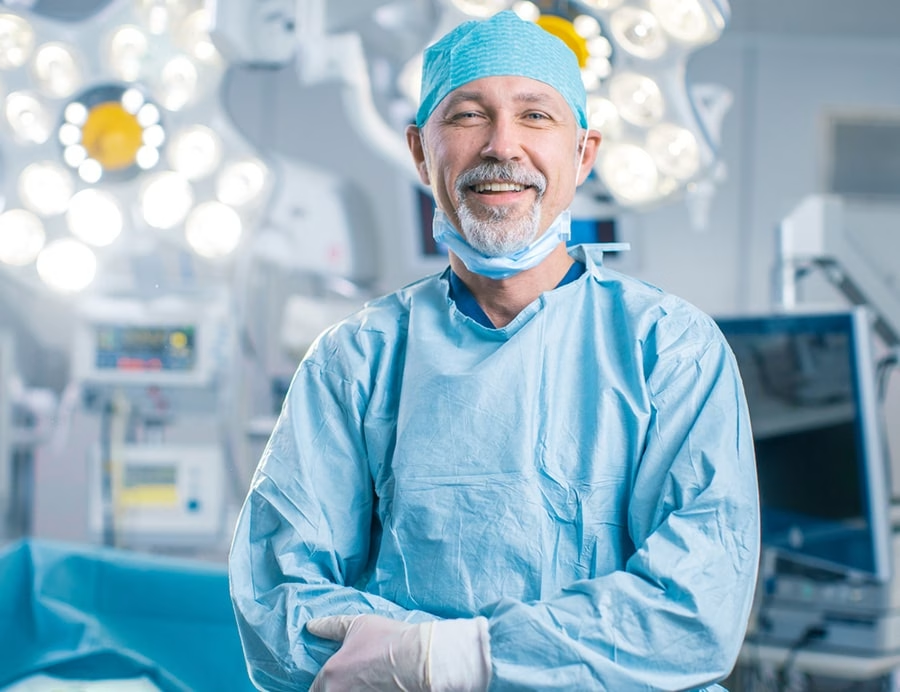Total Knee Replacement, also called Total Knee Arthroplasty, is a surgical procedure where the damaged surfaces of the knee joint is removed and replaced with an artificial prosthesis.

Total Knee Replacement Procedure
The Lateral Approach
The lateral approach to total knee replacement is a less common, innovative technique in which the surgeon makes a small incision on the outer (lateral) side of the knee and works between natural tissue planes to access the joint. Unlike traditional midline/medial approaches that often require splitting or manipulating the quadriceps tendon from the front, the lateral approach is designed to spare key muscles and soft tissues while maintaining stable tracking of the kneecap.
Optimotion Implants is currently the only total knee system purpose-built for the lateral approach, aligning implant design and instrumentation with the tissue-sparing pathway to support consistent alignment, patellar tracking, and early mobility.
Here are a few points to address your fears regarding lateral approach knee replacement:

Lateral Approach
Benefits
Muscle Sparing
In a traditional knee replacement, the quadriceps muscle is cut into to give the surgeon access to the knee joint. However, in the lateral approach, the cut is made on the side of the knee to avoid cutting into the muscle. Because of this, this procedure often leads to quicker recovery and less pain. Because the muscle is not damaged, you can walk the same day of surgery.
Small incision
The lateral incision is often cosmetically preferred due to the side placement (more discreet) and the small size. The lateral incision is about 4 inches long, and a small incision is sufficient even for larger knees. In contrast, the traditional frontal incision is about 10 inches long and can vary depending on patient size. In addition to the cosmetic advantage, the lateral incision leads to less pain in recovery because it does not have to be stretched while bending the knee.
Less Nerve Damage
This minimally invasive technique avoids Superficial Saphenous Nerve damage. In other words, it avoids damage of a large amount of nerves over the knee. Less nerve damage in surgery results in less pain in recovery.
Faster Recovery
In addition to experiencing less pain, patients also demonstrate better recovery when compared to those that have undergone the traditional approach of knee replacement. Patients have been shown to demonstrate improved range of motion and gait earlier in the healing process.1 Additionally, the quicker recovery of the quadriceps muscle allows for physical therapy to begin shortly after surgery to regain function.
Ideal for Outpatient Surgery Centers
Due to the muscle sparing nature of this approach, you can be mobile enough after surgery to go home the same day with the assistance of a walker. There is no need for an overnight hospital stay.